Carolee Dean's Blog, page 14
February 27, 2021
Not Just Little Kid Stuff - A Picture Book That Tackles a Tough Subject Beautifully
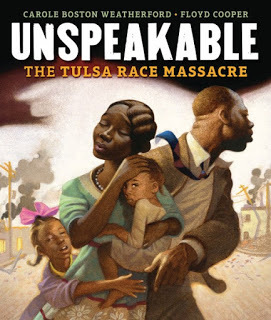
Unspeakable: The Tulsa Race Massacre written by Carole Boston Weatherford with illustrations by Floyd Cooper.
This title was just released this February and I've already added it to my library. Unspeakable tells the true story of the Tulsa Race Massacre of 1921. It's a picture book that tackles a tough subject beautifully and sensitively.
The Greenwood District, known as the "Black Wall Street" was a prosperous area of Tulsa, Oklahoma with thriving businesses, salons, and theaters. The oil industry was booming and many people, black and white, moved to Tulsa looking for a brighter future.
A white female elevator operator accused a 19-year-old black teen, Dick Rowland, of assaulting her. He had stepped on her foot. He was arrested and an angry mob of two thousand went to the jail, intent on lynching him, but 30 armed black men stood guard. That confrontation left 12 dead. The mob then turned on the town, looting, burning homes and buildings to the ground, and killing two to three-hundred residents. Another 8,000 lost their homes. Officials did nothing to stop the violence and the incident was not even investigated for 75 years. The next day the young black man, Dick Rowland, was released from jail and all the charges were dropped.
The book is recommended for grades 3-6 (ages 8-12), but with a reading Lexile of 1100L, it is also appropriate for older middle school and even high school students. Read more about the book on the Lerner Blog.
The illustrator, Coretta Scott King winner, Floyd Cooper, has a special connection to the story. He grew up in Tulsa. His grandfather was in the Greenwood District during the massacre and witnessed the events firsthand. It was initially called the Tulsa Race Riot which meant that insurance companies were not required to pay any damages to those who lost homes, businesses, and family members.
My book club will be reading a more adult version of the Tulsa Race Massacre later this year - The Burning: The Tulsa Race Massacre of 1921 by Tim Madigan.
It should result in a very lively discussion!
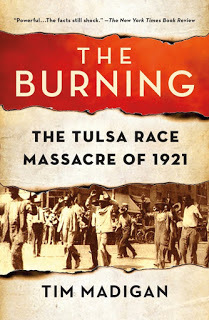
February 19, 2021
STORY FRAMES COMING SOON
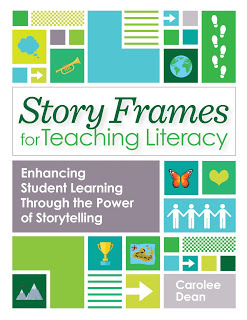
I am excited and delighted to share the cover for my new book, STORY FRAMES FOR TEACHING LITERACY coming out with Brookes Publishing in early April 2021. Many of you have participated in my workshops for Story Frames (formerly The Secret Language of Stories). I have presented these strategies at ASHA, ILA/IRA, and the Annual Reading, Literacy and Learning Conference put on each year by the International Dyslexia Association (IDA), as well as many smaller conferences and workshops.
If you have used these resources with your students and would like to write a brief testimonial for the book or for my website, please contact me at carolee@wordtravelliteracy.com.
Story Frames combines the strategies that teachers and SLPs implement to teach story grammar with the techniques that professional authors use to plot their books. This unique combination helps students appreciate stories at a deeper level and gives them tools for creating their own narratives.
Here are a few of the features of the book described by the publisher:
"This guidebook reveals how to unlock literacy and learning skills by captivating K–12 students with the power of stories: how they’re structured, how they reflect and change lives, and how students can create their own original narratives. Using dozens of diverse fiction and nonfiction books as vivid examples, you’ll discover how to teach 12 key story elements (Story Frames) in dynamic, fun, and highly visual ways, including Quick Draws, storyboards, and icons that make narrative structure easy to grasp. Then you’ll get in-depth guidance on how to use knowledge of story structure to build core literacy skills—from oral language to reading comprehension—and empower students to write their own personal stories in a variety of genres. The book includes more than 35 adaptable lesson plans and a complete package of online support materials including PowerPoints and other tools for online learning."
ONLINE MATERIALS: Implement Story Frames effectively with a full package of downloadable materials, including sample storyboards and templates, 40+ handouts and worksheets, game cards, slide decks to use in instruction, 30+ sample story analyses of books for children and young adults, and brief literature guides for applying Story Frames to picture books and to chapter books and novels.
Several noteworthy authors have contributed chapters to Story Frames including:
Amy Miller, Director of the May Center for Learning in Santa Fe, NM shares how students transform personal experiences into superhero stories. She runs a project called the Dyslexia Justice League where she uses superheroes and the Hero's Journey to help students explore personal struggles and develop a growth mindset.
Paula Moraine, educator, consultant, and author of Helping Students Take Control of Everyday Executive Functions provides practical strategies for using narratives as a medium for improving executive function skills.
Mary Jo O'Neill, parent advocate, discusses how getting parents to write down their family stories provides a powerful tool for advocacy. Her chapter highlights a type of persuasive writing that has real-world implications for students receiving special education services.
Lesley Roessing, university lecturer and author of Bridging the Gap: Reading Critically and Writing Meaningfully to Get to the Core shares insights for teaching memoir writing and explains how memoir can be a bridge to expository writing.
William Van Cleave, educational consultant and author of Writing Matters: Designing Sentence Skills in Students of All Ages, helps educators make sense out of grammar instruction by focusing on function rather than form.
Carol Westby, university lecturer, researcher, author, and leading authority on narrative development, discusses the importance of considering multicultural perspectives in the writing of personal stories and the ways storytelling varies across countries and cultures. Her chapter also discusses strategies for empowering English as a Second Language (ESL) students.
Thank you to all of the contributors. Story Frames would not have been the same without you!
For a full list of the downloadable resources that accompany the book, find out more at Brookes Publishing.
Sign up for my monthly NEWSLETTER for articles, book news, and FREE offers. Receive a FREE Story Template PDF called Travel Trouble when you sign up.
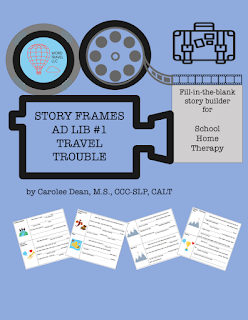
February 14, 2021
SCREENWRITING AND NOVEL PLOTTING - THE INSPIRATION BEHIND STORY FRAMES
 STORY FRAMES is a twelve-step story analysis method that I created based upon my experiences as both an author of fiction and a speech-language pathologist (SLP) working with struggling students in the public schools in grades K-12. As I observed the difficulties my students faced with reading, writing, and understanding stories, I set out to create a narrative analysis method that would bring stories to life and provide young people with tools to create exciting tales of their own.
STORY FRAMES is a twelve-step story analysis method that I created based upon my experiences as both an author of fiction and a speech-language pathologist (SLP) working with struggling students in the public schools in grades K-12. As I observed the difficulties my students faced with reading, writing, and understanding stories, I set out to create a narrative analysis method that would bring stories to life and provide young people with tools to create exciting tales of their own.Creative writing courses along with numerous books on the subject of story plotting for authors and screenwriters gave me the inspiration to combine the way teachers look at story structure with the way that professional writers plot their stories. Reading teachers and SLPs frequently use the Story Grammar elements outlined by Stein and Glenn (1979) to teach story structure to students: 1. Setting 2. Initiating Event 3. Internal Response 4. Attempt 5. Consequence 6. Reaction
English Teachers tend to draw upon tools such as Freytag's Pyramid: ExpositionRising ActionClimaxFalling ActionResolutionThe STORY FRAMES method is broken down into twelve basic elements or Story Frames based on the Hero's Journey as originally discussed by Joseph Campbell in The Hero With A Thousand Faces and later adapted for screenwriters and novelists by Christopher Vogler in The Writers Journey: Mythic Structure for Writers (Now in its 25th year). Other books on story plotting that influenced STORY FRAMES are found at the end of this post. I use the term "Hero's" Journey loosely. Heroes come in all shapes and sizes and their adventures don’t have to be epic odysseys to be life-changing. Stories do not necessarily contain all of the components outlined, and they don’t always occur in the order given below. In longer stories, many of the elements are repeated. The purpose of this analysis is to help students and other writers to recognize what is going on in stories and to begin to think like authors.
 The twelve elements of STORY FRAMES include:
The twelve elements of STORY FRAMES include:BEGINNING1. Ordinary World2. Call and Response3. Mentors, Guides, and Gifts4. CrossingMIDDLE5. New World6. Problems, Prizes, and Plans7. Midpoint Attempt8. DowntimeEND9. Chase and Escape10. Death and Transformation11. Climax: The Final Test12. Final Reward
To find out more about my story analysis method, visit the STORY FRAMES tab on this blog. Check out my fiction novels HERE.
There are many excellent books that have influenced my plotting techniques. For further reading I recommend:
1. The Writers Journey: Mythic Structure for Writers by Christopher Vogler
2. Save the Cat: The Last Book on Screenwriting You'll Ever Need by Blake Snyder
3. Story: Substance, Structure, Style and the Principles of Screenwriting by Robert McKee4. Inside Story: The Power of the Transformational Arc by Dara Marks5. First Draft in 30 Days: A Novel Writer's System for Building A Complete and Cohesive Manuscript by Karen S. Wiesner
To receive a FREE Story Builder Template called Travel Trouble SIGN UP for my monthly newsletter.
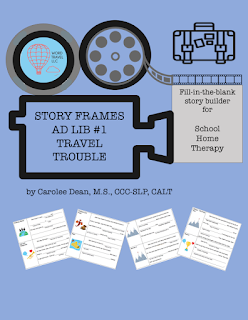
February 5, 2021
The Interesting History of Curious George
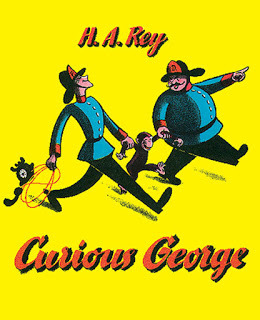
Cover from CURIOUS George by H.A. Rey. Copyright © 1941,
renewed 1969 by Margret E. Rey and H.A. Rey. Curious George®,
including without limitation the character’s name and the character’s
likenesses, are registered trademarks of Houghton Mifflin
Harcourt Publishing Company.Used by permission. All rights reserved
.
Although the focus of my book, Story Frames for Teaching Literacy, is on narrative non-fiction, I also discuss story structure through the use of fictional books like those found in the Curious George series. I was delighted to discover a nonfiction connection in a story of how the creators of the famous series, Hans Augusto Rey and his wife, Margaret Rey, fled from Paris to escape the Nazis in 1940 by bicycle during World War 2. Now I can explore historical events and connect to the social studies curriculum with my students even while exploring something as fanciful as a monkey getting into trouble through a series of comical misadventures.One of the only items the Reys were able to take with them when they escaped Paris was the manuscript for Curious George. They eventually ended up in the U.S. where the first book in the series was published in 1941. Many of the books are available in Spanish and other languages. The last book in the original series was published in 1966 and entitled, Curious George Goes to the Hospital. Subsequent books have come out written by other writers such as Curious George Goes to the Bookstore.
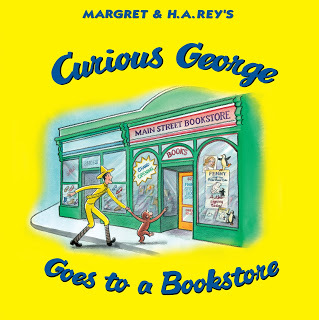
Cover from MARGRET AND H.A. REY’S CURIOUS GEORGE GOES TO
A BOOKSTORE. Jacket art © 2014 by Houghton Mifflin Harcourt
Publishing Company. Curious George®, including without limitation
the character’s name and the character’s likenesses,
are registered trademarks of Houghton Mifflin Harcourt Publishing
Company. Used by permission. All rights reserved.
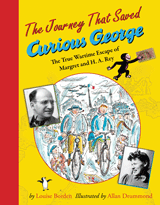
Blog by HMH https://www.hmhco.com/blog/celebrating-curiosity-day-2018-the-history-of-curious-george
For suggestions for how students can create their own Curious George stories, see the author's note at the end of Curious George Goes to the Bookstore.
Curious About Curious George

Although the focus of my book, Story Frames for Teaching Literacy, is on narrative non-fiction, I also discuss story structure through the use of fictional books like those found in the Curious George series. I was delighted to discover a nonfiction connection in a story of how the creators of the famous series, Hans Augusto Rey and his wife, Margaret Rey, fled from Paris to escape the Nazis in 1940 by bicycle during World War 2. Now I can explore historical events and connect to the social studies curriculum with my students even while exploring something as fanciful as a monkey getting into trouble through a series of comical misadventures.
One of the only items the Reys were able to take with them when they escaped Paris was the manuscript for Curious George. They eventually ended up in the U.S. where the first book in the series was published in 1941. Many of the books are available in Spanish and other languages. The last book in the original series was published in 1966 and entitled, Curious George Goes to the Hospital. Subsequent books have come out written by other writers such as Curious George Goes to the Bookstore.

Read about the escape of the Rey’s in The JourneyThat Saved Curious George: The True Wartime Escape of Margaret and H.A. Rey , written by Louise Borden and illustrated by Allan Drummond. ISBN 978-054-7417462. 80 pages. (2010) HMH.

Blog by HMH https://www.hmhco.com/blog/celebrating-curiosity-day-2018-the-history-of-curious-george
For suggestions for how students can create their own Curious George stories, see the authors note at the end of Curious George Goes to the Bookstore.
November 7, 2020
Speech-Language Pathologist Summit

I am honored and excited to be part of the PESI Speech-Language Pathologist Summit happening later in November. I'm also thrilled to be pictured above next to my long time mentor, Carol Westby, who has a chapter in my upcoming book, Story Frames for Teaching Literacy coming in March 2021. Find out about her PESI Narrative Seminar HERE.
Many of us were saddened to hear that the annual American Speech-Language-Hearing Association (ASHA) conference was not only canceled but that there would be no virtual replacement. In response, PESI brilliantly organized the SLP Summit to take place the same weekend, filling an important gap for those of us who need continuing education credit before the end of the year.
My session is a two-hour presentation on Written Language: Roles, Responsibilities, and Ethical Considerations. It includes evidence based strategies for working with students with reading and writing challenges. ASHA now requires continuing education training in ethics specifically and so I hope this seminar will fill an important gap. My session is appropriate not only for SLPs but also for other educators who are curious about how SLPs can support students with dyslexia and other related reading and writing challenges.
Register for the summit HERE. Hope to see you there!
October 30, 2020
Children's Authors with Dyslexia - Kersten Hamilton and Her Book DAYS OF THE DEAD
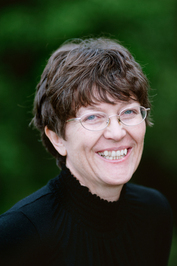
A few years ago, my good friend, Kersten Hamilton, did the interview below with me for the SWIDA (Southwest Branch of the International Dyslexia Association) newsletter just before she shared her story at the 2015 Annual Conference in Albuquerque. I have since read her responses to many of my students who have found inspiration in her strength and courage. She generously agreed to let me reprint the interview this month as I wrap up my series on children's authors with dyslexia.
Since it's Halloween, it's also a good time to mention her book, Days of the Dead. It's about a young girl, Glorieta Espinosa, living in a small New Mexico town who tries to come to terms with her mother's tragic death. The Day of the Dead is the magical holiday when the dead reconnect with the living and Glorieta desperately wants to reconnect with her mother. The book is for grades 5-8, but the complex themes of depression, suicide, and immigration will resonate with older students as well.
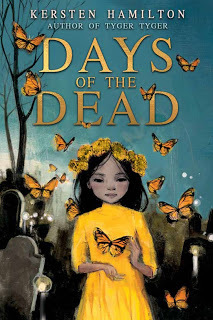
Now for the interview. Kersten Hamilton has written numerous titles from picture books to fantasy novels including the Goblin Wars series. She dropped out of high school due, in large part, to a significant reading disability, but went on to become a highly successful professional author.
What kind of learning difficulties did you have in school?
It started long before I entered school. No one paid much attention to it until I was six years old. My parents got divorced and my mother took me and my siblings to live with her brother, a doctor. He noticed that I couldn't tie my shoes, I hadn't hit any of the developmental milestones, I couldn't learn the alphabet. I screamed a lot and woke up crying every morning.
My uncle told my mother I was mentally retarded and I should be sterilized, which was a common practice in the state of Washington at that time. Fortunately, the court system in Alaska, where we had previously been living, ordered my mother to return for the divorce proceedings. My father was granted custody, and I never returned to Washington.
My father then moved us to Albuquerque when I was in the second grade. I'm not sure what the records that followed me to Albuquerque said. I assume they said I was retarded because my teachers all set me in the back of the room and pretty much ignored the fact that I couldn't read.
What were the signs that you were struggling in school?
I would study for three or four hours for every spelling test and still receive an F every time. "Hooked on Phonics" just didn't work for me. Nothing worked for me.
What made you want to be a writer?
I loved stories.
My father told wonderful stories and read to us all the time—The Jungle Book, Edgar Allen Poe, the Just So Stories. I would memorize stories the stories then go back to the books and puzzle out the shapes of the words. That’s how I finally learned to read. By fourth grade I was reading at grade level, but I still could not spell. I only knew the shapes of the words. This was very confusing to my teachers.
When I went to the library, I had trouble looking at the titles of books. I would have to hold up two pieces of paper vertically so I could see just one title at a time. Otherwise, it would be overwhelming. That makes it hard to do research in the library. Maps and graphs are almost impossible and the card catalog system is a nightmare.
How did school change for you as you got older?
What got me through middle school was my desire to capture stories, create books. I knew I needed typing skills to become an author.
I had to take the same typing class four times just to be able to pass it with a D. Through this experience. I’m sure the teacher winced every time she saw my name. But I learned to type the patterns of the word. I still couldn't spell the words, but I could tap their pattern. I was not fast enough to take notes
My goal kept me in school but did nothing to help my grades. I could take information in, but without a computer, I had no way to give it back to the teacher to prove that I was learning anything.
The first semester of tenth grade I had had enough. I dropped out.
Why did you decide to become a writer if the process is so difficult and laborious?
Stories. I believe that stories make us human, help us understand people who are different. I wanted to help people understand each other. But I couldn’t—and still can’t--do it without help and tools.
Spell checkers are essential. The internet has made research easier because I can type in what I'm looking for and it all appears in one nice column.
It is hard to look at a computer screen if there is too much information on it. If I enlarge the words I don't see too much information at one time.
All of that technology isn’t enough, though. My husband still has to read through everything and catches the spelling errors. I have an especially difficult time with words that have a similar shape pattern.
I know other successful writers who have reading and writing challenges. Do you have any theories on why so many successful authors with reading challenges have chosen writing as a profession?
Writing is hard for everyone, and every author encounters rejection. It is so hard and painful that many people give up. But all my life I have had to struggle. I have constantly had people telling me I couldn't do things.
When you live like that, when everything is hard, you learn to persevere. A few hundred rejection slips won’t stop you.
Kersten, thank you so much for sharing your story. As always, you continue to be an inspiration!
For additional information about children's authors with dyslexia, visit my previous October posts.
October 24, 2020
Mical - A Short Film About Dyslexia

MICAL, a short film about dyslexia (20 minutes), is the true story of a seven-year-old boy who struggles with reading and spelling so significantly that he can't even spell his own name correctly. In 1977 Bristol, England, Michael is humiliated by teachers and taunted by bullies, moved from school to school until his mother takes him to an educational psychologist to be evaluated and discovers that he has dyslexia. Unable to pay for expensive dyslexia intervention, his mother takes matters into her own hands and sets out to learning everything she can about the disorder. She then teaches her son to read and spell and sets out to help other struggling learners, eventually founding an organization called Nessy Learning.
This film was an official selection of the Oscar/BAFTA qualifying LA Shorts International Film Festival 2020. It was created to raise awareness about the devastating emotional effects and lost potential that can result when teachers and schools don't understand dyslexia. Most parents assume that dyslexia is being addressed in the schools, but that is often not true. Go to Mical - The Official Film Site to watch the film and read about the creator's efforts to make sure that every school in the UK has a dyslexia interventionist.
See my series of posts about children's authors with dyslexia and watch the videos where these authors talk about their personal experiences with having learning challenges.
Henry Winkler - Author of the Hank Zipzer seriesDav Pilkey - Author-Illustrator of Dogman and Captain UnderpantsLaurie Halse Anderson - Author of Speak and the Seeds of America TrilogyPatricia Polacco - Author-Illustrator of Thank You, Mr. Falker and Sticks and StonesFinally, watch another amazing video created by READING ROCKETS that contains a series of interviews with authors and illustrators with dyslexia and/or ADHD including Avi, Carmen Agra Deedy, Jerry Pinkney, E.B. Lewis, Dav Pilkey, and Patricia Polacco.
October 18, 2020
Children's Authors with Dyslexia - Patricia Polacco
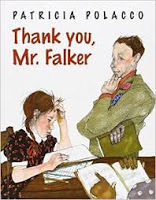 Continuing with my theme of honoring children's authors with dyslexia for Dyslexia Awareness Month, this week I'm excited to discuss author/illustrator Patricia Polacco. Thank You Mr. Falker is her picture book about a girl (the author) who struggles with reading.
Continuing with my theme of honoring children's authors with dyslexia for Dyslexia Awareness Month, this week I'm excited to discuss author/illustrator Patricia Polacco. Thank You Mr. Falker is her picture book about a girl (the author) who struggles with reading.See the Classroom Resource Guide for the book published by the International Literacy Association.
The author, Patricia Polacco, did a video interview with Reading Rockets where she discusses her reading challenges and the Teacher Who Changed Everything. Mr. Falker was the first one to realize she had dyslexia and he even paid for her reading therapy out of his own pocket. This short (under two minutes) video is definitely worth sharing with your students.
She created another video discussing her learning challenges and the terrible bullying she endured in school. Her book, Bully, is for children ages 7-10 (grades 2-5). For younger children, ages Prek-3rd grade, she has a brand new book out just this month entitled Sticks and Stones (Simon & Schuster).
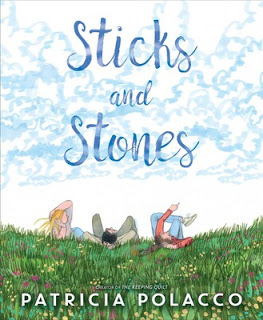
Sticks and Stones is about a year in the life of Patricia when she and two friends were bullied in elementary school. It depicts how they found strength in their friendship and in discovering their special talents.
See the video on Patricia Polacco and Bullying. She talks about her struggles at greater length, the devastating effects of being bullied, and the importance of kindness and acceptance. She states that children with learning disabilities are geniuses. I wondered about that comment at first. Certainly, we can't all be geniuses, but she clarifies this by saying, "We as humans are all gifted, but we don't open our gifts at the same time."
Temple Grandin, the famous animal science professor with autism puts it another way, "The world needs all kinds of minds." Perhaps we all have our own type of genius.
With that in mind, I will leave you with this thought.
Perhaps our most important job as educators is to help young people discover their unique genius.
See my blog posts on other authors with dyslexia:
Henry WinklerDav PilkeyLaurie Halse Anderson
October 9, 2020
Children's Authors with Dyslexia - Laurie Halse Anderson
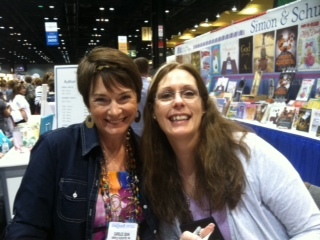 I have always admired the work of Laurie Halse Anderson. I met her in person at the American Library Association conference a few years back and discovered that she was warm and personable as well as supremely talented. Her young adult novel, Speak, was groundbreaking in both its content and its style. Her teen novels cover tough topics like sexual assault and eating disorders (see Wintergirls).
I have always admired the work of Laurie Halse Anderson. I met her in person at the American Library Association conference a few years back and discovered that she was warm and personable as well as supremely talented. Her young adult novel, Speak, was groundbreaking in both its content and its style. Her teen novels cover tough topics like sexual assault and eating disorders (see Wintergirls).
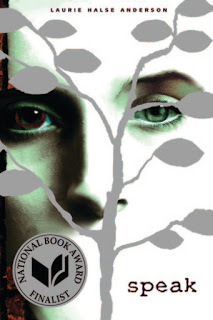
In addition to her books for teens grades 7-12, Anderson has also written several well-researched historical books for younger students in grades 5-9 such as her Seeds of America trilogy.
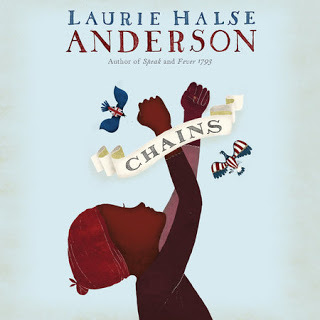
For even younger children, grades 3-7, she created the Vet Volunteer series with a number of books about children saving animals from abuse. The series focuses on five kids who volunteer at a veterinary clinic. Anderson describes the series as Babysitters Club + Animal ER.
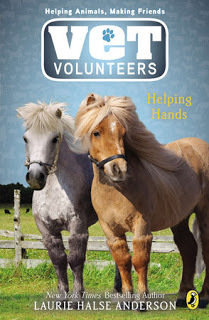
Anderson actually began by writing picture books. Her first title was Ndito Runs. Her 2008 picture book, Independent Dames: What You Never Knew About the Women and Girls of the American Revolution involved so much research that in one interview that it took her nearly as long to write the picture book as it takes her to write a novel.
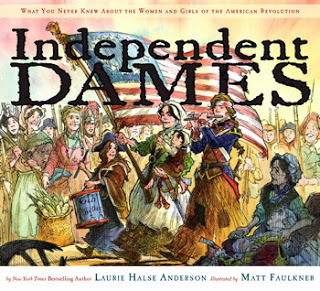
The scope and diversity of her books are impressive, but what is even more intriguing is that Anderson struggled to learn to read. This month on my blog I'm highlighting children's authors with dyslexia in celebration of Dyslexia Awareness Month, so I naturally wanted to include Anderson and her work.
In a video for Reading Rockets, Anderson talks about receiving extra help early on for reading as well as for speech. In the interview, she tells how she cracked the reading code and became an avid reader but still struggled with grammar and spelling. Her first positive experience with writing was when her second-grade teacher introduced her to haiku. She could choose words for the short-form poem that she knew how to spell and after that experience, she was on a roll.
I often use haiku with struggling writers. It is a simple, short form that his highly engaging and fun for kids of all ages. Watch for my fall haiku activity coming in November. In the meantime, watch Anderson's interview on Reading Rockets, explore her books, and check out last week's post about Henry Winkler and his Hank Zipzer series.



